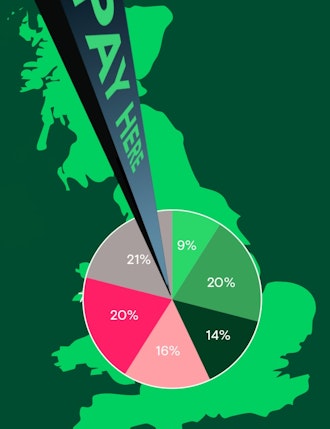Key Insights
-
Public familiarity with the new financial technologies is surprisingly low with one key demographic at risk of severely struggling to catch-up.
-
Patterns of familiarity as well as adoption reveal marked generational contrasts.
-
Regional differences suggest certain parts of the UK may be more advanced for a future rise in adoption.
-
Some groups consistently report lower awareness thereby raising concerns about equitable access in the near future.
- Assumptions around where these technologies will show up first are not always what you’d expect.
Don't have time to read more now? Sign up to our newsletter to get the latest insights directly in your inbox.
More than half of Britons admit they don’t really understand cryptocurrencies and one group in particular is falling behind dramatically. This begs the question, are we ready for a digital currency future?
In our latest research, we surveyed 1,004 people across the UK and 2,004 across the US to gauge public awareness of cryptocurrencies and their adoption. This report presents the findings from the UK, exploring how knowledge and usage of crypto vary across different demographics and regions.
Our goal is to explore the gap between the rapid evolution of crypto and the British public's understanding of this technology, especially when it comes to its potential real-world usage. We will also investigate whether some groups may be at a higher risk of being left behind in the shift toward digital currencies, either due to limited awareness or lack of access.
Which of the following best describes your experience with cryptocurrencies?
The lack of understanding of cryptocurrencies is evidently widespread in the UK, with a small but significant majority (51%) not fully grasping what they are.
This trend gets reversed when looking at our age demographics and particularly among the 25 to 34 age group. Here, not only do we find familiarity with the concept, but the majority declared to also own some form of cryptocurrency signalling a clear adoption rate. Both familiarity and adoption drop sharply from the 45-54 group, with a further 50% drop among those aged 55–64. Although it’s no surprise that tech awareness tends to dip with age, the real-world implications are worth a pause, especially when it comes to something as fundamental as currency and payments.
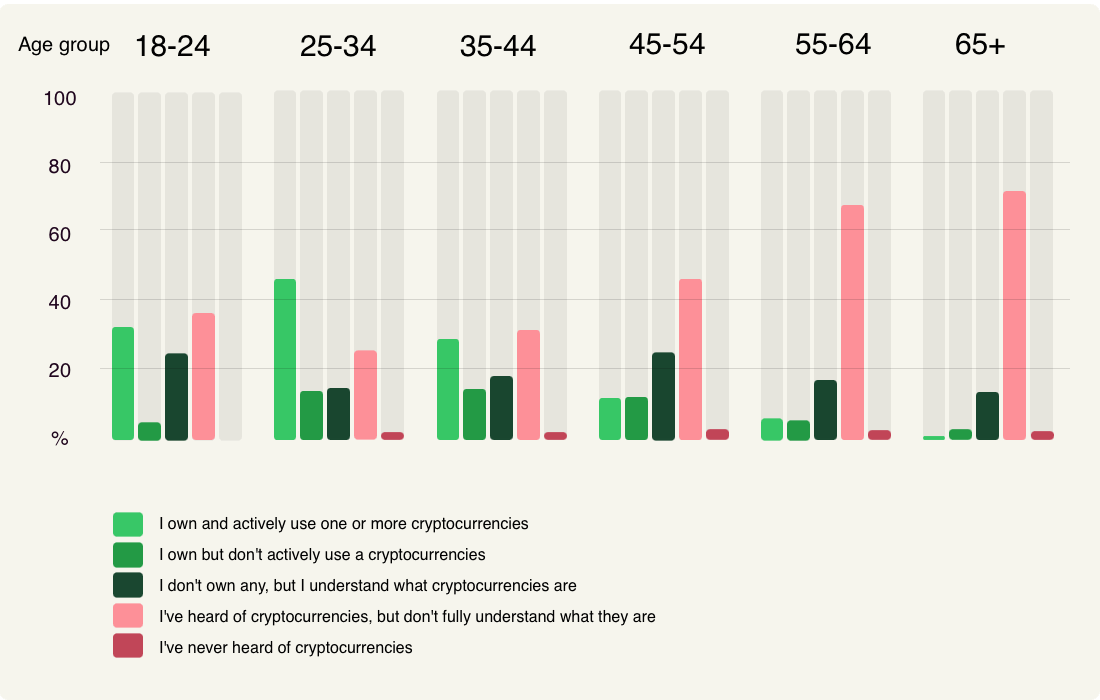
“This gap becomes even more apparent when considering the gender divide: more than 60% of women report not fully understanding cryptocurrencies, compared to fewer than 40% of men.”
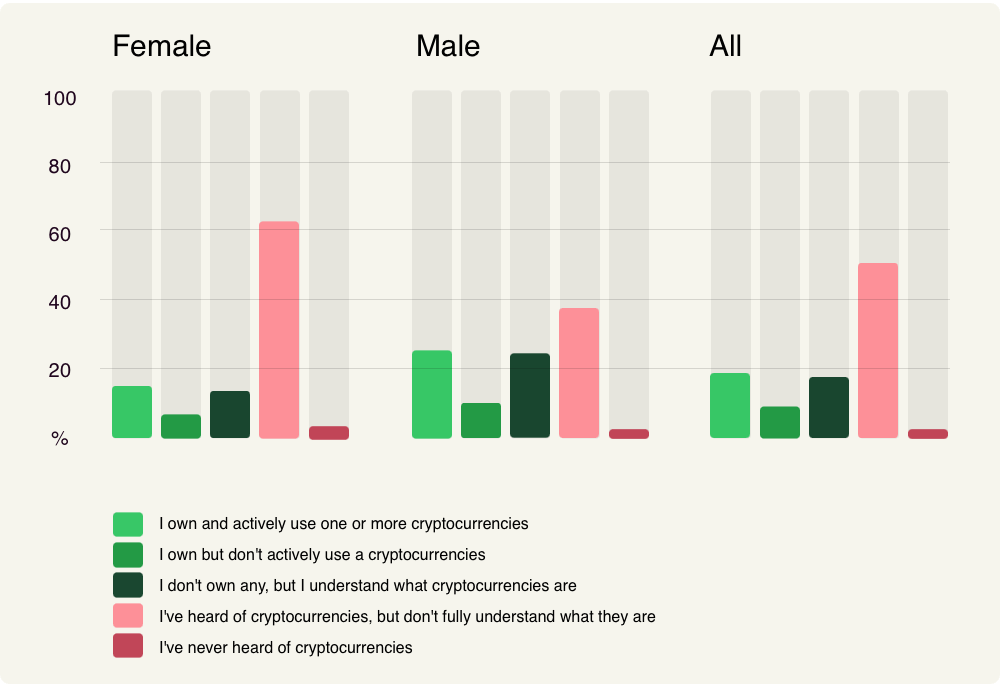
Regionally, the highest rates of both familiarity and adoption are found in the South East, followed by the North of England. It’s important to note how both regions are home to the UK's most thriving technology hubs led by London in the South East and the "Northern Tech Hub Triangle" of Manchester, Leeds, and Sheffield.
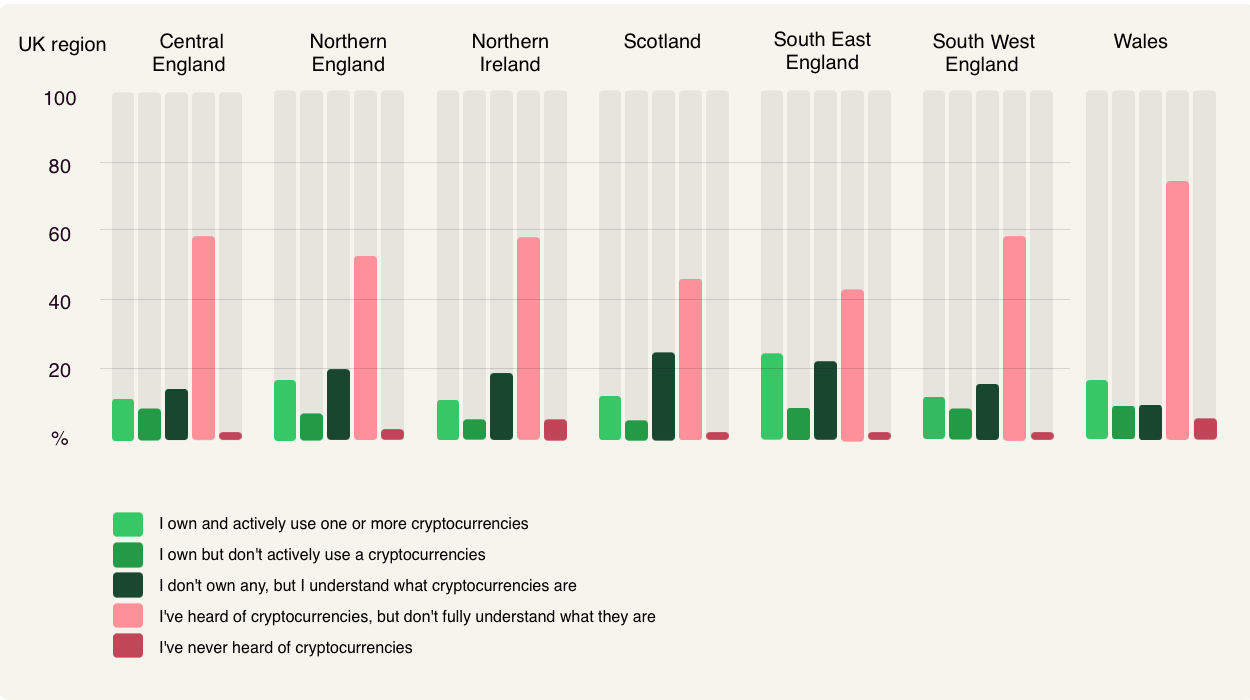
“It’s interesting that across all demographics, those without digital currency often admit they ‘don’t fully understand’ it, suggesting confusion may be the biggest barrier to adoption.”
Which of the following best describes your experience with Central Bank Digital Currencies (CBDC)?
Central Bank-issued digital currencies or CBDC, on the other hand, appear to be virtually unknown for a majority of the public, with a striking 58% of respondents admitting they've never even heard of the concept prior.
Once again, the disparity is far more pronounced along gender lines, with 65% of women being completely unfamiliar with the concept compared to 50% of men.
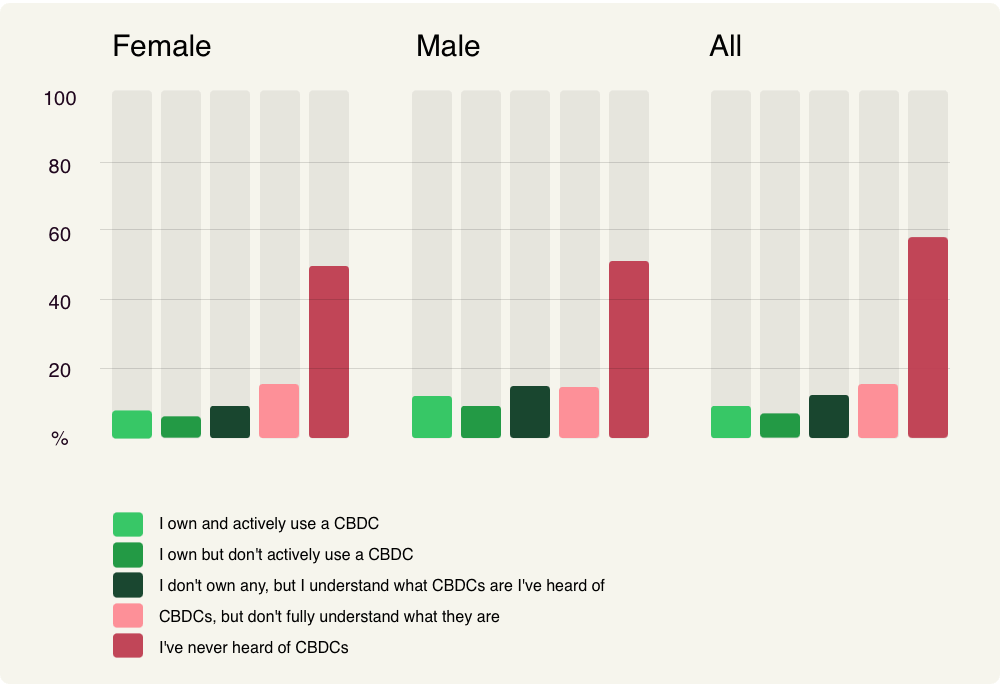
The trend of being largely unaware of CBDCs is consistent across most age groups, once again with the exception of the 25-34 group, which stands out as an outlier with significantly higher awareness and ownership rates. The 18–24 age group also shows strong awareness and ownership, though slightly less than the 25–34 group.
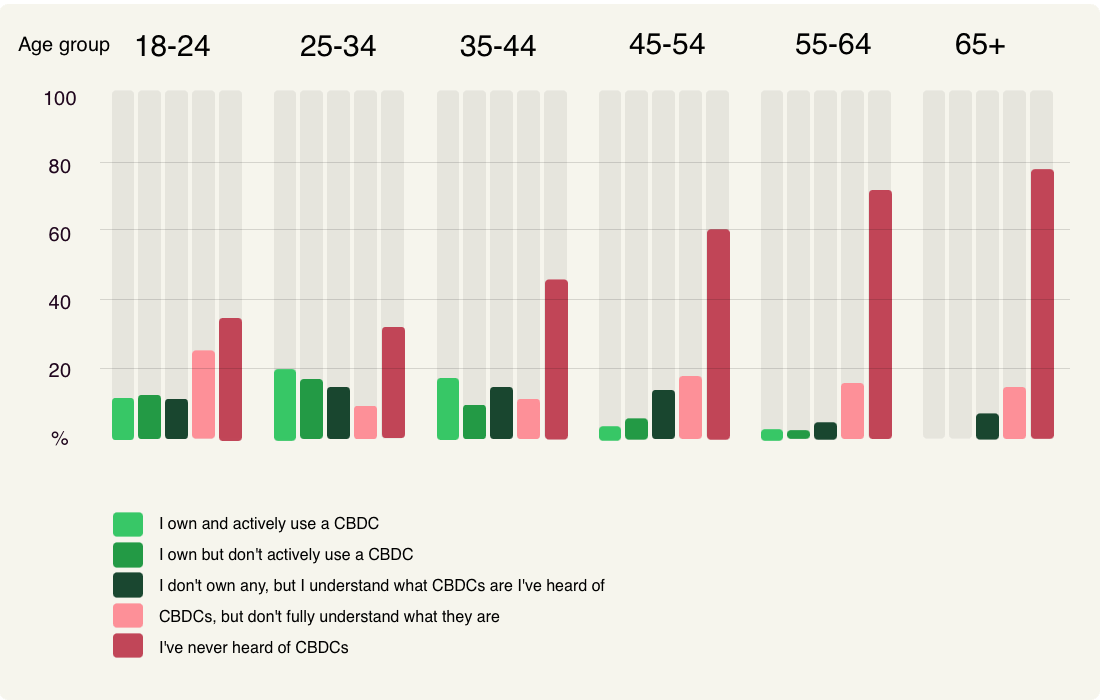
“If awareness is the first step to adoption, then most of the UK public hasn’t even reached the starting line.”
Have you ever used digital currencies for a purchase?
In terms of current or potential adoption, a majority of respondents (57%) have either used digital currencies or expressed interest in using them to purchase goods and services. Still, 38% remain firmly uninterested in adopting digital currencies.
Echoing earlier results, women are the least inclined demographic when it comes to cryptocurrencies, with half indicating they would not use them.
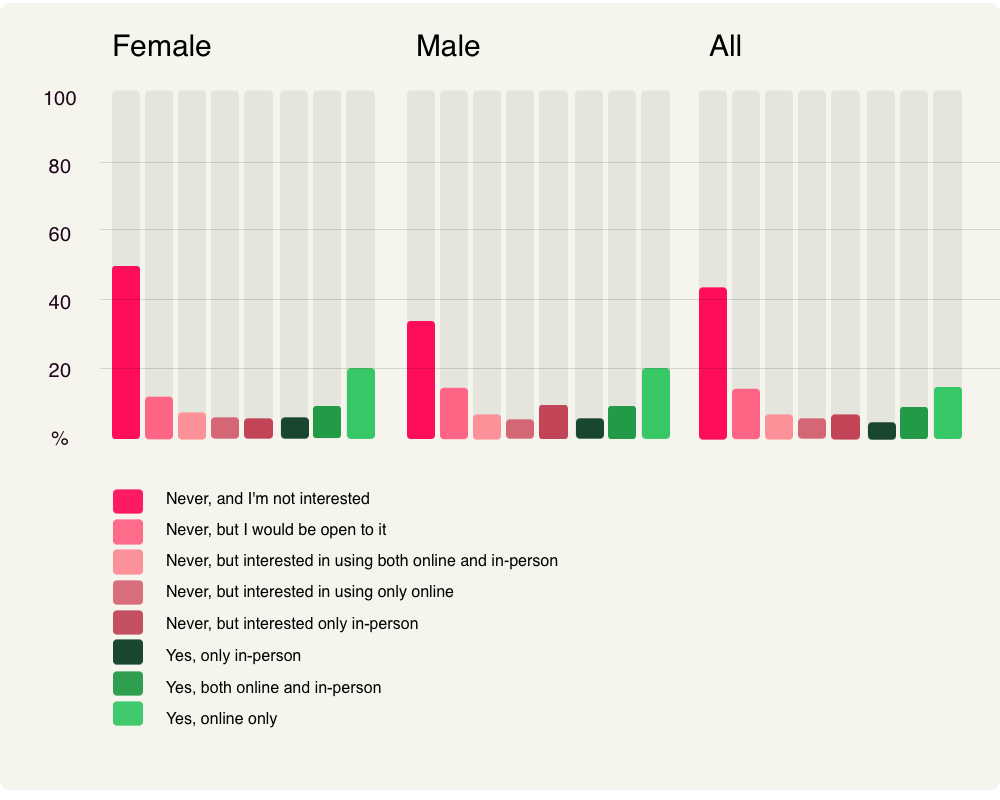
While most crypto users reported using it exclusively online, the trend shifts slightly among the 25 to 34 and 35 to 44 age groups. Although these more crypto-savvy demographics also primarily use crypto online, a notable proportion have reported using it in-person as well.
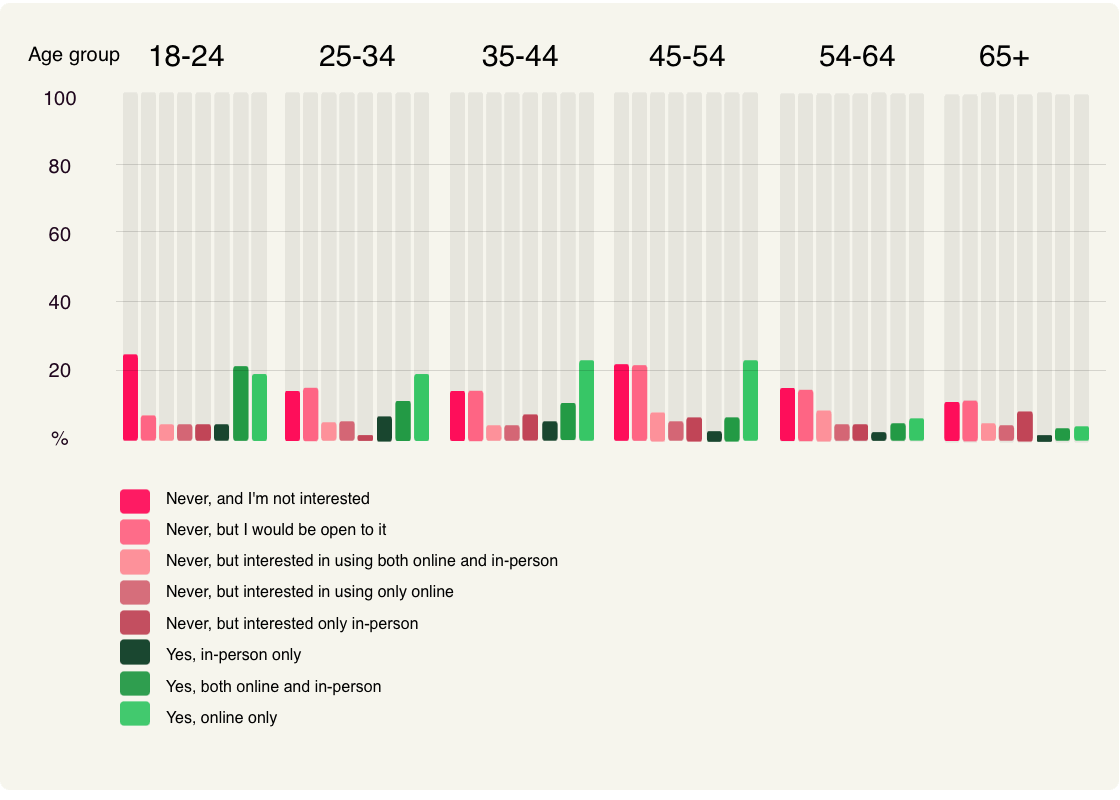
“While digital currencies are steadily gaining traction among the 25 to 44 year-old demographic, older adults remain disengaged or uninterested.”
Have you noticed more businesses accepting digital currencies?
Most respondents said they haven’t noticed more businesses accepting crypto in the past year - a trend especially pronounced among women, with over 70% reporting no change. This aligns with earlier findings of lower engagement and familiarity with crypto among women, which may partly explain their lack of awareness.
This pattern appears across age groups, with one key exception: a majority of 25–34-year-olds, our primary crypto-aware demographic, reported noticing an increase in businesses accepting crypto.
Although responses were mostly consistent across regions, the South East of England stood out, with 44% noticing at least one or two businesses accepting digital currencies, including 26% who said they’d seen ‘quite a few’. Again, this may be attributed to London’s undisputed role in pioneering new technology and setting industry standards across the UK.
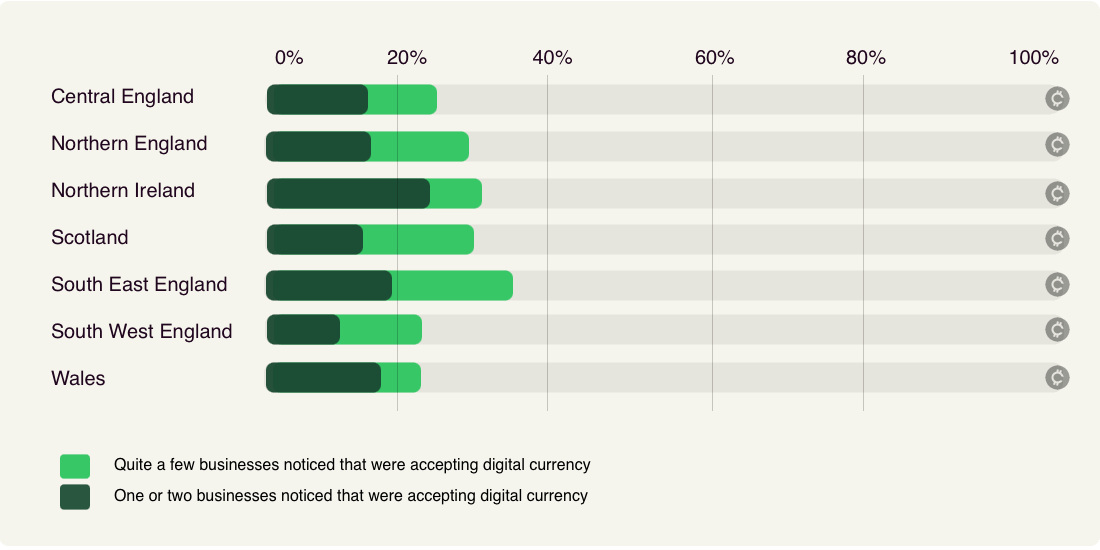
In which types of places or sectors would you expect in-person digital currency payments to become available before others?
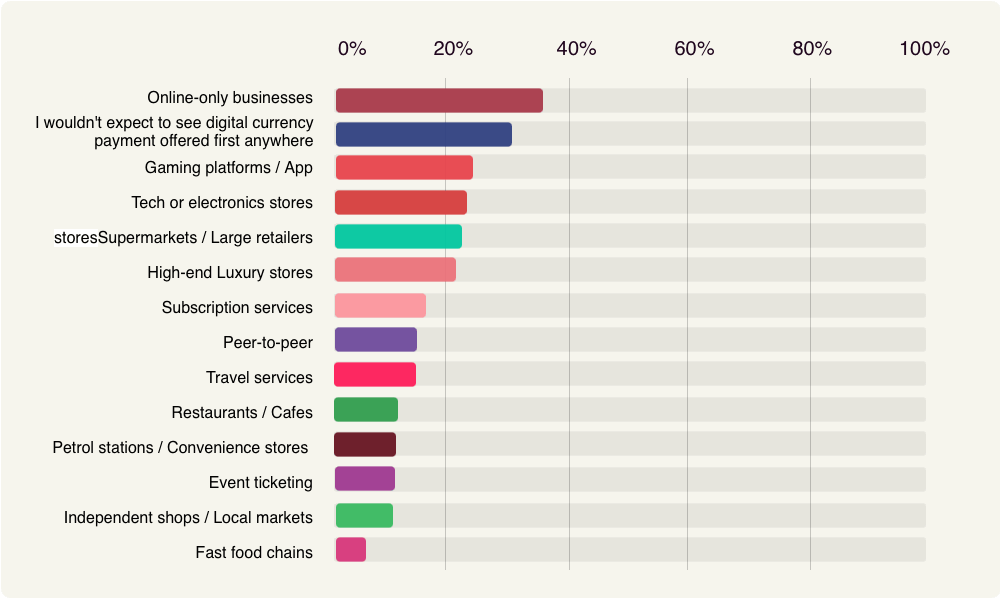
The results appear to be somewhat scattered and inconsistent, particularly when it comes to in-person businesses: while small independent shops rank higher - in pioneering exclusive crypto adoption - than large fast-food chains, large retailers also feature among the top choices. Adding to the mixed picture, online platforms like event ticketing rank surprisingly low, suggesting a degree of confusion among respondents about which business models might adopt the new technology first.
The only clear-cut result seems to be that the first to adopt will likely be an online-only platform (37%), while a significant portion (31%) of respondents do not see any specific business emerging as a trailblazer in crypto adoption.
“Despite the scale and speed of fast food chains’ transactions, these businesses are perceived as digital latecomers. Just 6% of Brits expect them to adopt crypto in the near future”
Conclusions:
Though most respondents have at least heard of cryptocurrencies, a slight majority still do not fully understand what they are or how they work. However, when it comes to CBDCs, the awareness gap is in plain sight, with nearly 60% of respondents admitting they had never heard of them in the first place.
The overall lack of awareness is most evident among older demographics and boomers in particular, whereas familiarity peaks among older Gen Zs and Millennials. Specifically, the 25 to 34 age group showcases high levels of both knowledge and adoption with the majority owning some form of cryptocurrency. This trend is also found, though to a lesser extent, in the 35 to 44 demographic.
Geographically, the results appeared relatively consistent across the UK, with no single region standing out significantly. That being said, the South East and the North of England show a slightly higher openness to cryptocurrencies and in the case of the South East also greater access, this is likely driven by the presence of thriving tech hubs in these areas.
Our findings suggest rather mixed perceptions about which business models will be the drivers in crypto offering. While online-only platforms are widely seen as the most likely (37%), opinions vary, especially when it comes to ranking in-person businesses.
The most striking insight from our research, however, is the clear gender divide. Women appear to be alongside older generations, the demographic most at risk of being left behind in the “crypto revolution”.
While men markedly show greater familiarity and adoption, women lag significantly behind, with more than half indicating they would not use cryptocurrencies any time soon. This raises some important questions: are digital currencies perceived as an all-male space? Has the ubiquitous image of the "crypto-bro" left women feeling excluded from the conversation?
If this trend continues, the risk is to create a new brand of digital divide or a sort of "crypto glass ceiling," wherein women, who are already underrepresented in tech, may once again be left out of this emerging financial landscape.
Think you’ve got a handle on digital currencies? Put your knowledge to the test with this quiz.
Methodology:
This report is based on a representative survey of 1,004 adults across the United Kingdom. The data was analysed by key demographic and geographic factors, including age range, gender, region, and proximity to the nearest major city. Regional-level findings are only reported where the sample size was sufficiently robust to support meaningful analysis.




